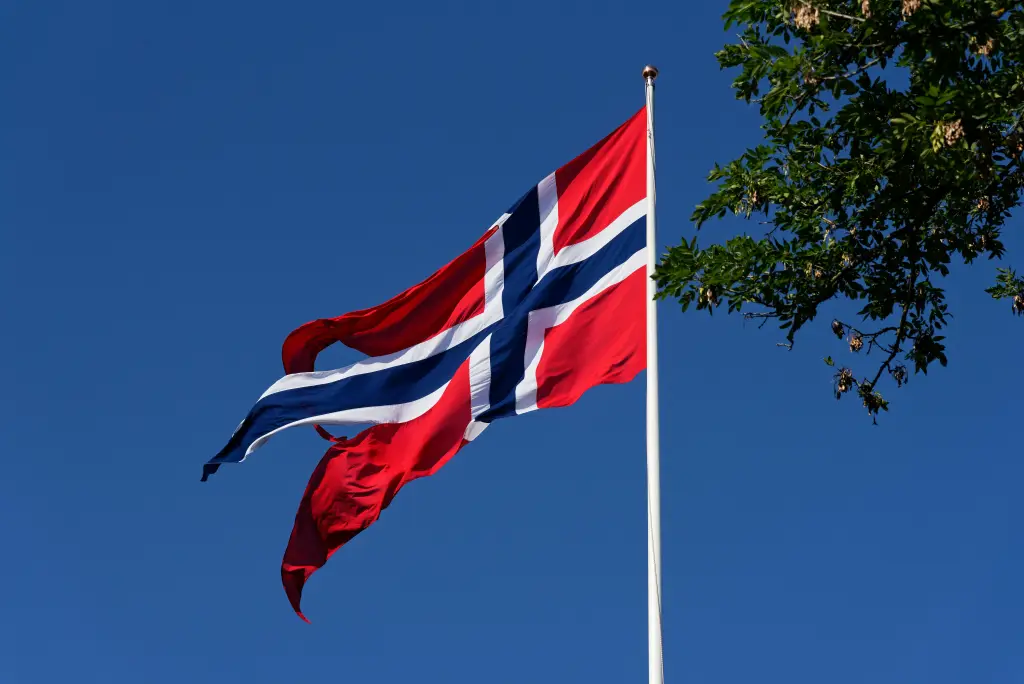Norway is officially the world’s first nation to ban deforestation

There’s a quiet tragedy happening around us—one that doesn’t scream or cry out, but vanishes leaf by leaf, acre by acre. Forests, the ancient lungs of our planet, are being cut down faster than we can comprehend. And with each tree that falls, we lose more than just greenery—we lose stability, biodiversity, balance. We lose a part of ourselves. For too long, the destruction of nature has been treated like a side note in the story of human progress. But what if we’ve been writing the wrong story all along?
In a world full of empty promises and delayed climate action, Norway just did something extraordinary: it became the first country to officially ban deforestation from its public procurement policies. No more government deals with companies tied to environmental destruction. No more passive complicity. This isn’t just paperwork—it’s a signal. A turning point. A reminder that real change doesn’t wait for permission.

Norway’s Bold Step — A Government That Said “No” to Deforestation
Norway has made history as the first country to officially ban deforestation in its public procurement policies, a move that means no government contracts will go to companies contributing to the clear-cutting of forests. While some corporations have begun shifting toward deforestation-free practices, Norway is the first government to embed this principle into national policy. This action fulfills a promise made at the 2014 UN Climate Summit alongside Germany and the UK, where the country pledged to promote deforestation-free supply chains. Two years later, in 2016, they followed through, proving that real leadership isn’t just about making statements—it’s about backing them with bold, measurable action.
This policy shift isn’t just symbolic—it’s strategic. Forests are often called the lungs of our planet because they absorb carbon dioxide and release oxygen, playing a vital role in regulating the climate. According to the World Wildlife Fund, deforestation contributes to roughly 15% of global greenhouse gas emissions. Beyond carbon, forests regulate water cycles, prevent soil erosion, and are home to 80% of the world’s terrestrial wildlife. Yet, between 46,000 and 58,000 square miles of forest are lost every year, largely to agricultural expansion for products like soy, palm oil, beef, and timber. Norway’s policy directly addresses this by cutting off support for companies that fuel this destruction, turning economic pressure into a tool for environmental protection.
This isn’t Norway’s first time stepping up for the world’s forests. The country has invested heavily in helping other nations curb deforestation, including a $1 billion contribution to Brazil’s Amazon Fund, which played a key role in reducing deforestation rates there by 75% over just seven years. Norway’s efforts have proven that international cooperation and targeted funding can make a measurable difference. While many countries continue to delay or dilute their climate commitments, Norway has set a precedent—one that shows governments can use their influence not only to reduce environmental harm, but to lead the way in a more sustainable global economy.

The True Cost of Deforestation — What We’re Really Losing
Deforestation isn’t just about trees—it’s about life systems unraveling. Forests cover 31% of the Earth’s surface and support ecosystems that are crucial for the planet’s balance. When trees are cut down en masse, the consequences stretch far beyond carbon emissions. Removing forests destabilizes regional climates, affects rainfall patterns, and causes erosion that can devastate farmland and water supplies. These ripple effects disrupt food systems, threaten biodiversity, and increase the likelihood of natural disasters. The destruction is slow and often invisible—until rivers dry up, topsoil vanishes, or floods sweep through what used to be forest-protected terrain.
The damage is especially cruel when we consider who depends on forests the most. Around 1.6 billion people rely directly on forests for their basic needs—food, water, medicine, shelter, even identity. Among them are some of the world’s most vulnerable communities: Indigenous groups who’ve lived in harmony with these ecosystems for generations. Their cultures are deeply rooted in the land, and when the forests fall, so do their ways of life. On top of that, 80% of land-based animals and plants make their home in forests. Species are being pushed to extinction, not because they failed to adapt—but because we’ve bulldozed their homes and burned their habitats for short-term economic gain.
The biggest driver behind all this is agriculture—mainly for products that show up on global supermarket shelves: beef from cleared pastures, soy for animal feed and processed foods, palm oil in everything from snacks to shampoo. From 2000 to 2011, these commodities accounted for 40% of tropical deforestation and nearly half the associated carbon emissions in key countries. It’s a supply-and-demand equation that’s deadly for the planet. And yet, with policies like Norway’s and growing consumer awareness, we now have a path to disrupt that cycle. The question isn’t whether we can—it’s whether more nations will find the courage to follow through.

Investment as Influence — How Money Shapes Environmental Outcomes
Ever Wondered Why So Many People Keep a Snake Plant in Their Bedroom? The Reason Why Is GeniusOne of the most overlooked levers in the climate fight is money—and Norway knows it. Alongside its deforestation ban, the country took another significant step by instructing its Government Pension Fund Global—the largest sovereign wealth fund on the planet—to consider biodiversity in its investment decisions. Until then, the fund had looked at climate risks when choosing where to put its money, but biodiversity hadn’t been factored in. That’s a critical shift, because where a country—or a corporation—puts its money sends a message. In financial terms, it creates or withdraws demand. In environmental terms, it signals which futures we are willing to fund.
This move matters on a global scale. The fund manages over a trillion dollars, and that kind of financial weight can tip industries. If the world’s biggest investors start pulling money out of companies that harm biodiversity or contribute to deforestation, those companies will either adapt or shrink. On the flip side, companies creating sustainable solutions—like reforestation technologies or plant-based alternatives—will gain momentum and funding. That’s the power of capital: it can destroy ecosystems or regenerate them, depending on how it’s directed. And governments, through public funds, hold the pen that draws that line.
Norway’s choice to align its investments with its environmental values offers a model for others. It tells the financial world that sustainability isn’t just ethical—it’s strategic. If we want clean air, drinkable water, and ecological resilience in the coming decades, we can’t keep investing in industries that are digging the planet’s grave. Nations can lead by putting their money where their mouth is. And in a time when so much talk surrounds climate action, Norway is showing that money—when used wisely—can be a voice louder than any speech.

Global Action vs. Global Inaction — Who Follows, Who Falls Behind
What makes Norway’s stance so powerful is that it stands in contrast to the silence of many others. Despite decades of climate talks, most nations have yet to make deforestation a non-negotiable red line. Forests continue to fall, not because we don’t know better, but because political will remains weak. It’s easier to subsidize logging or export beef than to confront the hard truth: that environmental destruction cannot be the price of economic growth. While Norway sets an example, it also exposes a harsh global reality—too many countries still treat nature as disposable, rather than foundational.
Yet the tide can turn. When Brazil received Norway’s support to protect the Amazon, the results were staggering—33,000 square miles of ancient rainforest saved, 3.2 billion tons of carbon emissions avoided. That’s proof that international collaboration works when backed by trust, resources, and long-term commitment. Former UN Secretary-General Ban Ki-Moon called the Brazil-Norway partnership an “outstanding example” of the cooperation we need. So why aren’t we seeing more of it? Partly because many governments still prioritize short-term economic metrics over long-term environmental health. Partly because global trade still rewards deforestation-heavy commodities.
But there’s hope in momentum. More companies are committing to deforestation-free sourcing. Consumers are asking harder questions about where their products come from. Financial institutions are beginning to weigh climate risks in their strategies. What’s needed now is for more governments to step up and set binding policies that match the scale of the problem. Norway didn’t wait for perfect consensus. It acted. And that simple act of political courage can be contagious—if we’re brave enough to follow.
What Will We Stand For? — A Reflection and a Call
This isn’t just about forests. It’s about what kind of world we want to live in—and leave behind. Trees don’t speak, but they tell stories. Of balance, of resilience, of quiet strength. When we cut them down recklessly, we silence something ancient and irreplaceable. Norway’s decision isn’t just a policy—it’s a statement of values. It asks us: what do we stand for, and what are we willing to give up to protect what matters most? It challenges the rest of the world to move beyond symbolic gestures and into real, systemic change.

Each of us, no matter where we live, plays a role. Whether we’re consumers choosing which products to buy, voters deciding which leaders to support, or creators influencing how others think—we all contribute to the story being written right now. Norway didn’t stop deforestation with a speech or a slogan. It did it with action: hard, enforceable, measurable decisions that cost something in the short term but give back so much more in the long run. That’s the kind of leadership our planet is desperate for—not just in parliaments, but in households, classrooms, boardrooms, and hearts.
So let’s ask ourselves—what would it look like if we each became defenders of the forest, not just in name but in deed? What if governments took nature seriously, not as a resource to exploit, but as a partner to protect? The time to act is now, because once a forest is gone, it doesn’t grow back in a year or even a lifetime. It takes centuries. And in the space of that silence, we may come to realize what we lost—not just trees, but a part of ourselves.
Loading...

